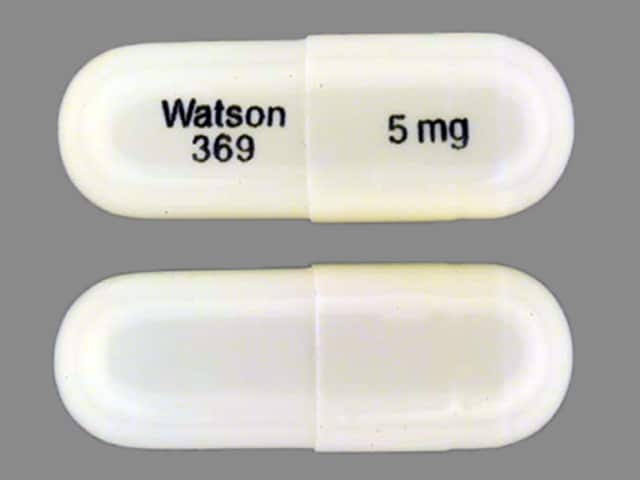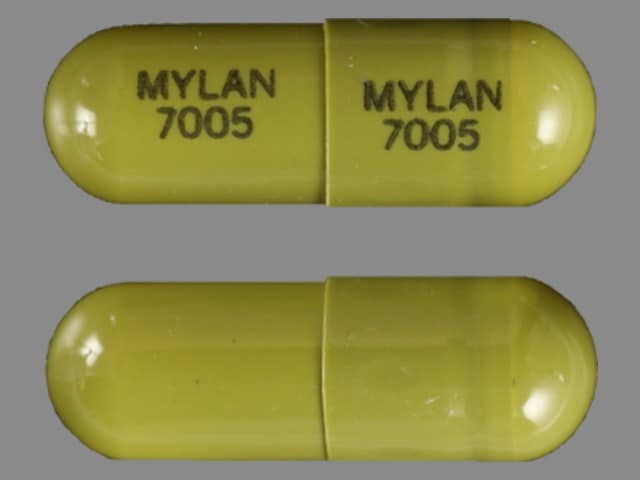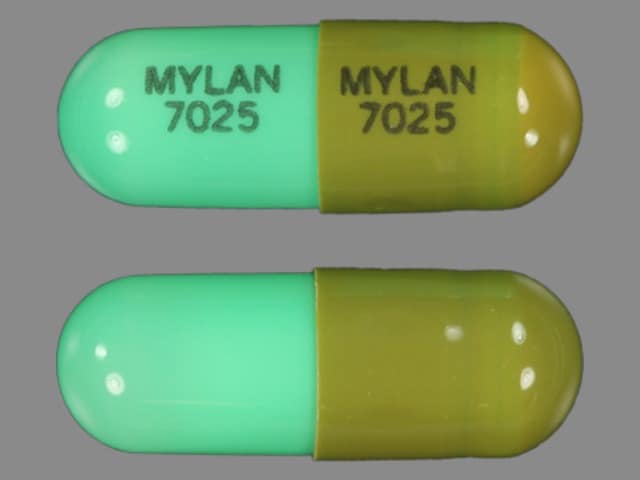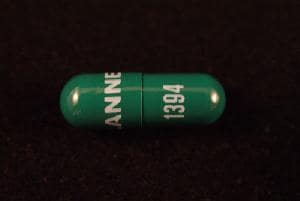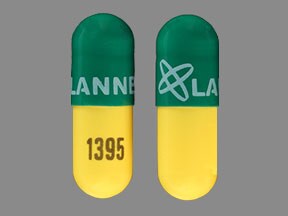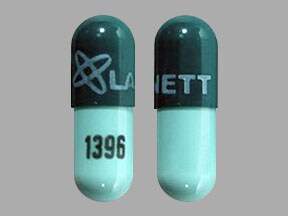Boxed Warning
Bronchospasm (Adasuve Inhalation):
Loxapine inhalation can cause bronchospasm that has the potential to lead to respiratory distress and respiratory arrest. Administer loxapine inhalation only in an enrolled health care facility that has immediate access on site to supplies and personnel trained to manage acute bronchospasm and ready access to emergency response services. Facilities must have a short-acting bronchodilator (eg, albuterol), including a nebulizer and inhalation solution, for the immediate treatment of bronchospasm. Prior to administering loxapine inhalation, screen patients regarding a current diagnosis, history, or symptoms of asthma, chronic obstructive pulmonary disease (COPD), and other lung diseases, and examine (including chest auscultation) patients for respiratory signs. Monitor for signs and symptoms of bronchospasm following treatment with loxapine inhalation.
Because of the risk of bronchospasm, loxapine inhalation is available only through a restricted program under a risk evaluation and mitigation strategy (REMS) called the Adasuve REMS.
Increased mortality in elderly patients with dementia-related psychosis:
Elderly patients with dementia-related psychosis treated with antipsychotic drugs are at an increased risk of death. Loxapine is not approved for the treatment of patients with dementia-related psychosis.
Dosage Forms
Excipient information presented when available (limited, particularly for generics); consult specific product labeling.
Aerosol Powder Breath Activated, Inhalation [preservative free]:
Adasuve: 10 mg (1 ea)
Capsule, Oral:
Generic: 5 mg, 10 mg, 25 mg, 50 mg
Pharmacology
Mechanism of Action
Loxapine is a dibenzoxazepine antipsychotic that blocks postsynaptic mesolimbic D1 and D2 receptors in the brain, and also possesses serotonin 5-HT2-blocking activity.
Pharmacokinetics/Pharmacodynamics
Absorption
Oral, IM, inhalation: Rapid and complete
Metabolism
Hepatic to glucuronide conjugates
Excretion
Urine (as metabolites); feces (as metabolites)
Onset of Action
Oral, IM: Within 30 minutes; Peak effect: 1.5 to 3 hours
Inhalation: 2 minutes
Duration of Action
Oral, IM: ~12 hours
Half-Life Elimination
Biphasic: Oral: Initial: 5 hours; Terminal: 19 hours; Inhalation: 6 to 8 hours
Protein Binding
Inhalation: ~97%
Use: Labeled Indications
Schizophrenia: IM, Oral: Treatment of schizophrenia.
Agitation associated with schizophrenia or bipolar I disorder: Inhalation: Acute treatment of agitation associated with schizophrenia or bipolar I disorder in adults. Note: As part of the Adasuve REMS program to mitigate the risk of bronchospasm, loxapine inhalation must be administered only in an enrolled health care facility.
Use: Off Label
Psychosis/agitation associated with dementiacyes
Data from a limited number of patients studied suggest that loxapine may be beneficial for the treatment of aggression associated with moderate to severe dementia Carlyle 1993.
Based on the American Psychiatric Association practice guideline on the use of antipsychotics to treat agitation or psychosis in patients with dementia, antipsychotics, such as loxapine, may be considered for the treatment of agitation and psychosis in certain patients with dementia; however, evidence for efficacy is modest and use should be limited to patients whose symptoms are dangerous, severe, or cause significant patient distress due to safety risks associated with antipsychotic use. Additionally, the guidelines recommend giving preference to second generation antipsychotics over first generation antipsychotics like loxapine in elderly patients with dementia-related psychosis due to a potentially greater risk of harm relative to second generation antipsychotics.
Contraindications
Oral: Hypersensitivity to loxapine or any component of the formulation; severe drug-induced CNS depression; coma.
Inhalation: Known hypersensitivity to loxapine, amoxapine, or any component of the formulation; current diagnosis or history of asthma, COPD, or other lung disease associated with bronchospasm; acute respiratory symptoms or signs (eg, wheezing); current use of medications to treat airways disease, such as asthma or COPD; history of bronchospasm following loxapine treatment.
Canadian labeling: Additional contraindication (not in US labeling): Oral, IM: Circulatory collapse or severe heart disorder; concomitant use of metoclopramide; scheduled regional or spinal anesthesia; brain damage, liver disorders, renal insufficiency, pheochromocytoma and blood dyscrasias.
Dosage and Administration
Dosing: Adult
Schizophrenia:
Oral: Initial: 10 mg twice daily (up to 50 mg daily may be considered in severely disturbed patients), increase dose until psychotic symptoms are controlled; usual maintenance: 60 to 100 mg daily in divided doses 2 to 4 times daily; satisfactory response often observed with doses of 20 to 60 mg daily (maximum: 250 mg/day). Therapy should be maintained at lowest effective dose.
IM [Canadian product]: 12.5 to 50 mg every 4 to 6 hours or longer; individualize dose early in therapy; some patients respond satisfactorily to twice-daily dosing
Acute treatment of agitation associated with schizophrenia or bipolar I disorder: Inhalation: 10 mg once daily; maximum dose: 10 mg per 24-hour period
Discontinuation of therapy: The American Psychiatric Association (APA), Canadian Psychiatric Association (CPA), and World Federation of Societies of Biological Psychiatry (WFSBP) guidelines recommend gradually tapering antipsychotics to avoid withdrawal symptoms and minimize the risk of relapse (APA [Lehman 2004]; Cerovecki 2013; CPA [Addington 2005]; WFSBP [Hasan 2012]); risk for withdrawal symptoms may be highest with highly anti-cholinergic or dopaminergic antipsychotics (Cerovecki 2013). When stopping antipsychotic therapy in patients with schizophrenia, the CPA guidelines recommend a gradual taper over 6 to 24 months, and the APA guidelines recommend reducing the dose by 10% each month (APA [Lehman 2004]; CPA [Addington 2005]). Continuing anti-parkinsonism agents for a brief period after discontinuation may prevent withdrawal symptoms (Cerovecki 2013). When switching antipsychotics, 3 strategies have been suggested: cross-titration (gradually discontinuing the first antipsychotic while gradually increasing the new antipsychotic), overlap and taper (maintaining the dose of the first antipsychotic while gradually increasing the new antipsychotic, then tapering the first antipsychotic), and abrupt change (abruptly discontinuing the first antipsychotic and either increasing the new antipsychotic gradually or starting it at a treatment dose). Evidence supporting ideal switch strategies and taper rates is limited, and results are conflicting (Cerovecki 2013; Remington 2005).
Dosing: Geriatric
Reduced dosing may be indicated due to risks of adverse events associated with high-dose therapy. Refer to adult dosing.
Psychosis/agitation associated with dementia (off-label use): Oral: Initial: 5 mg twice daily; may increase dose based on response and tolerability to a maximum dose of 50 mg 3 times daily. The mean total daily dose in the study was 36 mg/day, with a range of 10 to 80 mg/day (Carlyle 1993). Note: In patients without a clinically significant response after 4 weeks, taper and withdraw therapy. In patients with an adequate response, attempt to taper and withdraw therapy within 4 months, unless symptoms recurred with a previous taper attempt. Assess symptoms at least monthly during taper and for at least 4 months after withdrawal of therapy (APA [Reus 2016]).
Reconstitution
Inhalation: Remove inhaler from foil pouch; indicator light is off. Firmly pull out the plastic tab from the rear of the inhaler. When the green indicator light turns on, the inhaler is ready for use. Administer inhaler within 15 minutes after removing the tab to prevent automatic deactivation of the inhaler. The green indicator light will turn off when deactivated indicating the inhaler is not usable.
Oral solution [Canadian product] should be mixed with orange or grapefruit juice prior to administration.
Administration
Inhalation: Must be administered only by a health care professional. Instruct patient to exhale fully. Use inhaler on inspiration and instruct patient to hold breath as long as possible, up to 10 seconds. Check that the green light turns off indicating the dose has been delivered. If the light remains on after the patient inhales, the full dose was not delivered. Repeat inhalation up to 2 additional times. If green light still does not turn off, discard inhaler and use a new one. Inhaler may produce a flash of light and clicking sound, and become warm with use; this is normal. Discard after one use.
Oral solution [Canadian product]: Mix prior to administration.
Solution for injection [Canadian product] is administered by IM injection. Do not administer IV
Storage
Capsules: Store at 20°C to 25°C (68°F to 77°F).
Inhalation: Store at 15°C to 30°C (59°F to 86°F).
Canadian products: Injection solution, oral solution, tablets: Store at 15°C to 30°C (59°F to 86°F).
Loxapine Images
Drug Interactions
Acetylcholinesterase Inhibitors: May diminish the therapeutic effect of Anticholinergic Agents. Anticholinergic Agents may diminish the therapeutic effect of Acetylcholinesterase Inhibitors. Monitor therapy
Acetylcholinesterase Inhibitors (Central): May enhance the neurotoxic (central) effect of Antipsychotic Agents. Severe extrapyramidal symptoms have occurred in some patients. Monitor therapy
Aclidinium: May enhance the anticholinergic effect of Anticholinergic Agents. Avoid combination
Agents to Treat Airway Disease: May enhance the adverse/toxic effect of Loxapine. More specifically, the use of Agents to Treat Airway Disease is likely a marker of patients who are likely at a greater risk for experiencing significant bronchospasm from use of inhaled loxapine. Management: This is specific to the Adasuve brand of loxapine, which is an inhaled formulation. This does not apply to non-inhaled formulations of loxapine. Avoid combination
Alcohol (Ethyl): CNS Depressants may enhance the CNS depressant effect of Alcohol (Ethyl). Monitor therapy
Alizapride: May enhance the CNS depressant effect of CNS Depressants. Monitor therapy
Amifampridine: Agents With Seizure Threshold Lowering Potential may enhance the neuroexcitatory and/or seizure-potentiating effect of Amifampridine. Monitor therapy
Amisulpride: Antipsychotic Agents may enhance the adverse/toxic effect of Amisulpride. Management: Drugs listed as exceptions to this monograph are discussed in further detail in separate drug interaction monographs. Avoid combination
Amphetamines: Antipsychotic Agents may diminish the stimulatory effect of Amphetamines. Monitor therapy
Anticholinergic Agents: May enhance the adverse/toxic effect of other Anticholinergic Agents. Monitor therapy
Anti-Parkinson Agents (Dopamine Agonist): Antipsychotic Agents (First Generation [Typical]) may diminish the therapeutic effect of Anti-Parkinson Agents (Dopamine Agonist). Anti-Parkinson Agents (Dopamine Agonist) may diminish the therapeutic effect of Antipsychotic Agents (First Generation [Typical]). Management: Avoid concomitant therapy if possible and monitor for decreased effects of both agents when these combinations cannot be avoided. Atypical antipsychotics such as clozapine and quetiapine may be less likely to reduce the effects of anti-Parkinson agents. Consider therapy modification
Azelastine (Nasal): CNS Depressants may enhance the CNS depressant effect of Azelastine (Nasal). Avoid combination
Blonanserin: CNS Depressants may enhance the CNS depressant effect of Blonanserin. Consider therapy modification
Botulinum Toxin-Containing Products: May enhance the anticholinergic effect of Anticholinergic Agents. Monitor therapy
Brexanolone: CNS Depressants may enhance the CNS depressant effect of Brexanolone. Monitor therapy
Brimonidine (Topical): May enhance the CNS depressant effect of CNS Depressants. Monitor therapy
Bromopride: May enhance the adverse/toxic effect of Antipsychotic Agents. Avoid combination
Bromperidol: May enhance the CNS depressant effect of CNS Depressants. Avoid combination
Buprenorphine: CNS Depressants may enhance the CNS depressant effect of Buprenorphine. Management: Consider reduced doses of other CNS depressants, and avoiding such drugs in patients at high risk of buprenorphine overuse/self-injection. Initiate buprenorphine at lower doses in patients already receiving CNS depressants. Consider therapy modification
BuPROPion: May enhance the neuroexcitatory and/or seizure-potentiating effect of Agents With Seizure Threshold Lowering Potential. Monitor therapy
Cannabidiol: May enhance the CNS depressant effect of CNS Depressants. Monitor therapy
Cannabis: May enhance the CNS depressant effect of CNS Depressants. Monitor therapy
CarBAMazepine: Loxapine may increase serum concentrations of the active metabolite(s) of CarBAMazepine. Monitor therapy
Chloral Betaine: May enhance the adverse/toxic effect of Anticholinergic Agents. Monitor therapy
Chlormethiazole: May enhance the CNS depressant effect of CNS Depressants. Management: Monitor closely for evidence of excessive CNS depression. The chlormethiazole labeling states that an appropriately reduced dose should be used if such a combination must be used. Consider therapy modification
Chlorphenesin Carbamate: May enhance the adverse/toxic effect of CNS Depressants. Monitor therapy
Cimetropium: Anticholinergic Agents may enhance the anticholinergic effect of Cimetropium. Avoid combination
CNS Depressants: May enhance the adverse/toxic effect of other CNS Depressants. Monitor therapy
Deutetrabenazine: May enhance the adverse/toxic effect of Antipsychotic Agents. Specifically, the risk for akathisia, parkinsonism, or neuroleptic malignant syndrome may be increased. Monitor therapy
Dimethindene (Topical): May enhance the CNS depressant effect of CNS Depressants. Monitor therapy
Doxylamine: May enhance the CNS depressant effect of CNS Depressants. Management: The manufacturer of Diclegis (doxylamine/pyridoxine), intended for use in pregnancy, specifically states that use with other CNS depressants is not recommended. Monitor therapy
Dronabinol: May enhance the CNS depressant effect of CNS Depressants. Monitor therapy
Droperidol: May enhance the CNS depressant effect of CNS Depressants. Management: Consider dose reductions of droperidol or of other CNS agents (eg, opioids, barbiturates) with concomitant use. Exceptions to this monograph are discussed in further detail in separate drug interaction monographs. Consider therapy modification
Eluxadoline: Anticholinergic Agents may enhance the constipating effect of Eluxadoline. Avoid combination
Esketamine: May enhance the CNS depressant effect of CNS Depressants. Monitor therapy
Flunitrazepam: CNS Depressants may enhance the CNS depressant effect of Flunitrazepam. Consider therapy modification
Gastrointestinal Agents (Prokinetic): Anticholinergic Agents may diminish the therapeutic effect of Gastrointestinal Agents (Prokinetic). Monitor therapy
Glucagon: Anticholinergic Agents may enhance the adverse/toxic effect of Glucagon. Specifically, the risk of gastrointestinal adverse effects may be increased. Monitor therapy
Glycopyrrolate (Oral Inhalation): Anticholinergic Agents may enhance the anticholinergic effect of Glycopyrrolate (Oral Inhalation). Avoid combination
Glycopyrronium (Topical): May enhance the anticholinergic effect of Anticholinergic Agents. Avoid combination
Guanethidine: Antipsychotic Agents may diminish the therapeutic effect of Guanethidine. Monitor therapy
HYDROcodone: CNS Depressants may enhance the CNS depressant effect of HYDROcodone. Management: Avoid concomitant use of hydrocodone and benzodiazepines or other CNS depressants when possible. These agents should only be combined if alternative treatment options are inadequate. If combined, limit the dosages and duration of each drug. Consider therapy modification
HydrOXYzine: May enhance the CNS depressant effect of CNS Depressants. Monitor therapy
Iohexol: Agents With Seizure Threshold Lowering Potential may enhance the adverse/toxic effect of Iohexol. Specifically, the risk for seizures may be increased. Management: Discontinue agents that may lower the seizure threshold 48 hours prior to intrathecal use of iohexol. Wait at least 24 hours after the procedure to resume such agents. In nonelective procedures, consider use of prophylactic anticonvulsants. Consider therapy modification
Iomeprol: Agents With Seizure Threshold Lowering Potential may enhance the adverse/toxic effect of Iomeprol. Specifically, the risk for seizures may be increased. Management: Discontinue agents that may lower the seizure threshold 48 hours prior to intrathecal use of iomeprol. Wait at least 24 hours after the procedure to resume such agents. In nonelective procedures, consider use of prophylactic anticonvulsants. Consider therapy modification
Iopamidol: Agents With Seizure Threshold Lowering Potential may enhance the adverse/toxic effect of Iopamidol. Specifically, the risk for seizures may be increased. Management: Discontinue agents that may lower the seizure threshold 48 hours prior to intrathecal use of iopamidol. Wait at least 24 hours after the procedure to resume such agents. In nonelective procedures, consider use of prophylactic anticonvulsants. Consider therapy modification
Ipratropium (Oral Inhalation): May enhance the anticholinergic effect of Anticholinergic Agents. Avoid combination
Itopride: Anticholinergic Agents may diminish the therapeutic effect of Itopride. Monitor therapy
Kava Kava: May enhance the adverse/toxic effect of CNS Depressants. Monitor therapy
Lemborexant: May enhance the CNS depressant effect of CNS Depressants. Management: Dosage adjustments of lemborexant and of concomitant CNS depressants may be necessary when administered together because of potentially additive CNS depressant effects. Close monitoring for CNS depressant effects is necessary. Consider therapy modification
Levosulpiride: Anticholinergic Agents may diminish the therapeutic effect of Levosulpiride. Avoid combination
Lithium: May enhance the neurotoxic effect of Antipsychotic Agents. Lithium may decrease the serum concentration of Antipsychotic Agents. Specifically noted with chlorpromazine. Monitor therapy
Lofexidine: May enhance the CNS depressant effect of CNS Depressants. Management: Drugs listed as exceptions to this monograph are discussed in further detail in separate drug interaction monographs. Monitor therapy
LORazepam: Loxapine may enhance the adverse/toxic effect of LORazepam. Specifically, prolonged stupor, respiratory depression, and/or hypotension. Monitor therapy
Magnesium Sulfate: May enhance the CNS depressant effect of CNS Depressants. Monitor therapy
Mequitazine: Antipsychotic Agents may enhance the arrhythmogenic effect of Mequitazine. Management: Consider alternatives to one of these agents when possible. While this combination is not specifically contraindicated, mequitazine labeling describes this combination as discouraged. Consider therapy modification
Methotrimeprazine: CNS Depressants may enhance the CNS depressant effect of Methotrimeprazine. Methotrimeprazine may enhance the CNS depressant effect of CNS Depressants. Management: Reduce adult dose of CNS depressant agents by 50% with initiation of concomitant methotrimeprazine therapy. Further CNS depressant dosage adjustments should be initiated only after clinically effective methotrimeprazine dose is established. Consider therapy modification
Methylphenidate: Antipsychotic Agents may enhance the adverse/toxic effect of Methylphenidate. Methylphenidate may enhance the adverse/toxic effect of Antipsychotic Agents. Monitor therapy
Metoclopramide: May enhance the adverse/toxic effect of Antipsychotic Agents. Avoid combination
MetyroSINE: CNS Depressants may enhance the sedative effect of MetyroSINE. Monitor therapy
MetyroSINE: May enhance the adverse/toxic effect of Antipsychotic Agents. Monitor therapy
Mianserin: May enhance the anticholinergic effect of Anticholinergic Agents. Monitor therapy
Minocycline (Systemic): May enhance the CNS depressant effect of CNS Depressants. Monitor therapy
Mirabegron: Anticholinergic Agents may enhance the adverse/toxic effect of Mirabegron. Monitor therapy
Nabilone: May enhance the CNS depressant effect of CNS Depressants. Monitor therapy
Nitroglycerin: Anticholinergic Agents may decrease the absorption of Nitroglycerin. Specifically, anticholinergic agents may decrease the dissolution of sublingual nitroglycerin tablets, possibly impairing or slowing nitroglycerin absorption. Monitor therapy
Opioid Agonists: CNS Depressants may enhance the CNS depressant effect of Opioid Agonists. Management: Avoid concomitant use of opioid agonists and benzodiazepines or other CNS depressants when possible. These agents should only be combined if alternative treatment options are inadequate. If combined, limit the dosages and duration of each drug. Consider therapy modification
Orphenadrine: CNS Depressants may enhance the CNS depressant effect of Orphenadrine. Avoid combination
Oxatomide: May enhance the anticholinergic effect of Anticholinergic Agents. Avoid combination
Oxomemazine: May enhance the CNS depressant effect of CNS Depressants. Avoid combination
OxyCODONE: CNS Depressants may enhance the CNS depressant effect of OxyCODONE. Management: Avoid concomitant use of oxycodone and benzodiazepines or other CNS depressants when possible. These agents should only be combined if alternative treatment options are inadequate. If combined, limit the dosages and duration of each drug. Consider therapy modification
Paraldehyde: CNS Depressants may enhance the CNS depressant effect of Paraldehyde. Avoid combination
Perampanel: May enhance the CNS depressant effect of CNS Depressants. Management: Patients taking perampanel with any other drug that has CNS depressant activities should avoid complex and high-risk activities, particularly those such as driving that require alertness and coordination, until they have experience using the combination. Consider therapy modification
Piribedil: Antipsychotic Agents may diminish the therapeutic effect of Piribedil. Piribedil may diminish the therapeutic effect of Antipsychotic Agents. Management: Use of piribedil with antiemetic neuroleptics is contraindicated, and use with antipsychotic neuroleptics, except for clozapine, is not recommended. Avoid combination
Potassium Chloride: Anticholinergic Agents may enhance the ulcerogenic effect of Potassium Chloride. Management: Patients on drugs with substantial anticholinergic effects should avoid using any solid oral dosage form of potassium chloride. Avoid combination
Potassium Citrate: Anticholinergic Agents may enhance the ulcerogenic effect of Potassium Citrate. Avoid combination
Pramlintide: May enhance the anticholinergic effect of Anticholinergic Agents. These effects are specific to the GI tract. Consider therapy modification
Quinagolide: Antipsychotic Agents may diminish the therapeutic effect of Quinagolide. Monitor therapy
Ramosetron: Anticholinergic Agents may enhance the constipating effect of Ramosetron. Monitor therapy
Revefenacin: Anticholinergic Agents may enhance the anticholinergic effect of Revefenacin. Avoid combination
Rufinamide: May enhance the adverse/toxic effect of CNS Depressants. Specifically, sleepiness and dizziness may be enhanced. Monitor therapy
Secretin: Anticholinergic Agents may diminish the therapeutic effect of Secretin. Management: Avoid concomitant use of anticholinergic agents and secretin. Discontinue anticholinergic agents at least 5 half-lives prior to administration of secretin. Consider therapy modification
Selective Serotonin Reuptake Inhibitors: CNS Depressants may enhance the adverse/toxic effect of Selective Serotonin Reuptake Inhibitors. Specifically, the risk of psychomotor impairment may be enhanced. Monitor therapy
Serotonergic Agents (High Risk): May enhance the adverse/toxic effect of Antipsychotic Agents. Specifically, serotonergic agents may enhance dopamine blockade, possibly increasing the risk for neuroleptic malignant syndrome. Antipsychotic Agents may enhance the serotonergic effect of Serotonergic Agents (High Risk). This could result in serotonin syndrome. Monitor therapy
Sodium Oxybate: May enhance the CNS depressant effect of CNS Depressants. Management: Consider alternatives to combined use. When combined use is needed, consider minimizing doses of one or more drugs. Use of sodium oxybate with alcohol or sedative hypnotics is contraindicated. Consider therapy modification
Sulpiride: Antipsychotic Agents may enhance the adverse/toxic effect of Sulpiride. Avoid combination
Suvorexant: CNS Depressants may enhance the CNS depressant effect of Suvorexant. Management: Dose reduction of suvorexant and/or any other CNS depressant may be necessary. Use of suvorexant with alcohol is not recommended, and the use of suvorexant with any other drug to treat insomnia is not recommended. Consider therapy modification
Tapentadol: May enhance the CNS depressant effect of CNS Depressants. Management: Avoid concomitant use of tapentadol and benzodiazepines or other CNS depressants when possible. These agents should only be combined if alternative treatment options are inadequate. If combined, limit the dosages and duration of each drug. Consider therapy modification
Tetrabenazine: May enhance the adverse/toxic effect of Antipsychotic Agents. Monitor therapy
Tetrahydrocannabinol: May enhance the CNS depressant effect of CNS Depressants. Monitor therapy
Tetrahydrocannabinol and Cannabidiol: May enhance the CNS depressant effect of CNS Depressants. Monitor therapy
Thalidomide: CNS Depressants may enhance the CNS depressant effect of Thalidomide. Avoid combination
Thiazide and Thiazide-Like Diuretics: Anticholinergic Agents may increase the serum concentration of Thiazide and Thiazide-Like Diuretics. Monitor therapy
Tiotropium: Anticholinergic Agents may enhance the anticholinergic effect of Tiotropium. Avoid combination
Topiramate: Anticholinergic Agents may enhance the adverse/toxic effect of Topiramate. Monitor therapy
Trimeprazine: May enhance the CNS depressant effect of CNS Depressants. Monitor therapy
Umeclidinium: May enhance the anticholinergic effect of Anticholinergic Agents. Avoid combination
Zolpidem: CNS Depressants may enhance the CNS depressant effect of Zolpidem. Management: Reduce the Intermezzo brand sublingual zolpidem adult dose to 1.75 mg for men who are also receiving other CNS depressants. No such dose change is recommended for women. Avoid use with other CNS depressants at bedtime; avoid use with alcohol. Consider therapy modification
Test Interactions
False-positives for phenylketonuria, amylase, uroporphyrins, urobilinogen
Adverse Reactions
Inhalation: Frequency not always defined.
Cardiovascular: Hypotension (3%), syncope (2%)
Central nervous system: Sedation (12%)
Gastrointestinal: Dysgeusia (14%)
Hypersensitivity: Hypersensitivity
Respiratory: Respiratory distress (includes bronchospasm, chest pain, cough, dyspnea, pharyngeal edema, wheezing; asthma patients: 54%; COPD patients: 19%), throat irritation (3%)
<1%: Extrapyramidal reaction
Oral: Frequency not defined.
Cardiovascular: ECG changes, edema, flushing (facial), hypertension, hypotension, orthostatic hypotension, syncope, tachycardia
Central nervous system: Agitation, confusion, disruption of body temperature regulation, dizziness, drowsiness, extrapyramidal reaction (akathisia, akinesia, dystonia, drug-induced parkinson’s disease, tardive dyskinesia), headache, hyperpyrexia, insomnia, neuroleptic malignant syndrome (NMS), numbness, paresthesia, sedation, seizure, slurred speech, tension, unsteady gait
Dermatologic: Alopecia, dermatitis, pruritus, seborrhea, skin photosensitivity, skin rash
Endocrine & metabolic: Amenorrhea, galactorrhea, gynecomastia, hyperprolactinemia, menstrual disease, polydipsia, weight gain, weight loss
Gastrointestinal: Constipation, nausea, paralytic ileus, vomiting, xerostomia
Genitourinary: Impotence, priapism (rare), urinary retention
Hematologic & oncologic: Agranulocytosis, leukopenia, thrombocytopenia
Hepatic: Hepatitis, increased serum ALT, increased serum AST, jaundice
Neuromuscular & skeletal: Muscle twitching, weakness
Ophthalmic: Blepharoptosis, blurred vision
Respiratory: Dyspnea, nasal congestion
Warnings/Precautions
Concerns related to adverse effects:
- Anticholinergic effects: May cause anticholinergic effects (constipation, xerostomia, blurred vision, urinary retention); use with caution in patients with decreased GI motility, paralytic ileus, urinary retention, BPH, xerostomia, glaucoma, or visual problems. Relative to other antipsychotics, loxapine has a low potency of cholinergic blockade (Richelson 1999).
- Blood dyscrasias: Leukopenia, neutropenia, and agranulocytosis (sometimes fatal) have been reported in clinical trials and postmarketing reports with antipsychotic use; presence of risk factors (eg, preexisting low WBC or history of drug-induced leuko-/neutropenia) should prompt periodic blood count assessment. Discontinue therapy at first signs of blood dyscrasias or if absolute neutrophil count <1,000/mm3.
- Bronchospasm: [US Boxed Warning]: Loxapine inhalation can cause bronchospasm that has the potential to lead to respiratory distress and respiratory arrest. Administer only in an REMS enrolled health care facility with immediate access to on-site supplies and personnel trained to manage acute bronchospasm and ready access to emergency response services. Facilities must have a short-acting bronchodilator (eg, albuterol), including a nebulizer and inhalation solution, for the immediate treatment of bronchospasm. Prior to administering loxapine inhalation, screen patients regarding a current diagnosis, history or symptoms of asthma, COPD, and other lung diseases and examine patients (including chest auscultation) for respiratory signs. Monitor for signs and symptoms of bronchospasm following treatment with loxapine inhalation. Loxapine can cause sedation, which can mask the signs of bronchospasm.
- CNS depression: May cause CNS depression, which may impair physical or mental abilities; patients must be cautioned about performing tasks that require mental alertness (eg, operating machinery, driving).
- Esophageal dysmotility/aspiration: Antipsychotic use has been associated with esophageal dysmotility and aspiration; risk increases with age. Use with caution in patients at risk for aspiration pneumonia (ie, Alzheimer disease), particularly in patients >75 years (Herzig 2017; Maddalena 2004).
- Extrapyramidal symptoms: May cause extrapyramidal symptoms (EPS), including pseudoparkinsonism, acute dystonic reactions, akathisia, and tardive dyskinesia. Risk of dystonia (and possibly other EPS) may be greater with increased doses, use of conventional antipsychotics, males, and younger patients. Factors associated with greater vulnerability to tardive dyskinesia include older in age, female gender combined with postmenopausal status, Parkinson disease, pseudoparkinsonism symptoms, affective disorders (particularly major depressive disorder), concurrent medical diseases such as diabetes, previous brain damage, alcoholism, poor treatment response, and use of high doses of antipsychotics (APA [Lehman 2004]; Soares-Weiser 2007). Consider therapy discontinuation with signs/symptoms of tardive dyskinesia. Increased incidence of EPS has been observed with IM administration compared to oral administration.
- Falls: May increase the risk for falls due to somnolence, orthostatic hypotension and motor or sensory instability. Complete fall risk assessments at baseline and periodically during treatment in patients with diseases or on medications that may also increase fall risk.
- Hyperprolactinemia: Antipsychotic use has been associated with increased prolactin levels; clinical significance of hyperprolactinemia in patients with breast cancer or other prolactin-dependent tumors is unknown (Lehman [APA] 2004; Pollack 1993; Wang 2002).
- Hypotension: May cause hypotension, orthostatic hypotension, and syncope; use with caution in patients at risk of this effect or in those who would not tolerate transient hypotensive episodes (cerebrovascular disease, cardiovascular disease, dehydration, hypovolemia, or concurrent medication use that may predispose to hypotension/bradycardia).
- Neuroleptic malignant syndrome (NMS): NMS has been associated with use of antipsychotic agents; monitor for hyperpyrexia, mental status changes, fever, muscle rigidity, and/or autonomic instability. Discontinue treatment immediately with onset of NMS; recurrence has been reported in patients rechallenged with antipsychotic therapy.
- Ocular effects: Antipsychotic use has been associated with pigmentary retinopathy, and lenticular and corneal deposits, particularly with prolonged therapy (Oshika 1995).
- Temperature regulation: Antipsychotic use has been associated with impaired core body temperature regulation; caution with strenuous exercise, heat exposure, dehydration, and concomitant medication possessing anticholinergic effects (Kerwin 2004; Kwok 2005; Martinez 2002).
Disease-related concerns:
- Cardiovascular disease: Use with caution in patients with cardiovascular disease.
- Dementia: [US Boxed Warning]: Elderly patients with dementia-related psychosis treated with antipsychotics are at an increased risk of death. Most deaths appeared to be either cardiovascular (eg, heart failure, sudden death) or infectious (eg, pneumonia) in nature. Use with caution in patients with Lewy body dementia or Parkinson disease dementia due to greater risk of adverse effects, increased sensitivity to extrapyramidal effects, and association with irreversible cognitive decompensation or death. The APA recommends giving preference to second generation antipsychotics over first generation antipsychotics in elderly patients with dementia-related psychosis due to a potentially greater risk of harm relative to second generation antipsychotics (APA [Reus 2016]). Loxapine is not approved for the treatment of dementia-related psychosis.
- Seizure disorder: Use with caution in patients at risk of seizures, including those with a history of seizures, head trauma, brain damage, alcoholism, or concurrent therapy with medications which may lower seizure threshold.
Concurrent drug therapy issues:
- Drug-drug interactions: Potentially significant interactions may exist, requiring dose or frequency adjustment, additional monitoring, and/or selection of alternative therapy. Consult drug interactions database for more detailed information.
Dosage forms specific issues:
- Appropriate use: Injection [Canadian product]: Reserve injection for patients unable to tolerate oral administration; convert to oral dosage form with symptom control and ability to tolerate oral administration.
Other warnings/precautions:
- Discontinuation of therapy: When discontinuing antipsychotic therapy, the American Psychiatric Association (APA), Canadian Psychiatric Association (CPA), and World Federation of Societies of Biological Psychiatry (WFSBP) guidelines recommend gradually tapering antipsychotics to avoid physical withdrawal symptoms, including anorexia, anxiety, diaphoresis, diarrhea, dizziness, dyskinesia, headache, myalgia, nausea, paresthesia, restlessness, tremulousness, and vomiting (APA [Lehman 2004]; CPA [Addington 2005]; Lambert 2007; WFSBP [Hasan 2012]). The risk of withdrawal symptoms is highest following abrupt discontinuation of highly anti-cholinergic or dopaminergic antipsychotics (Cerovecki 2013). Additional factors such as duration of antipsychotic exposure, the indication for use, medication half-life and risk for relapse should be considered. In schizophrenia, there is no reliable indicator to differentiate the minority who will not from the majority who will relapse with drug discontinuation. However, studies in which the medication of well-stabilized patients were discontinued indicate that 75% of patients relapse within 6 to 24 months. Indefinite maintenance antipsychotic medication is generally recommended, and especially for patients who have had multiple prior episodes or 2 episodes within 5 years (APA [Lehman 2004]).
Monitoring Parameters
Mental status; vital signs (as clinically indicated); weight, height, BMI, waist circumference (baseline; at every visit for the first 6 months; quarterly with stable antipsychotic dose); CBC (as clinically indicated; monitor frequently during the first few months of therapy in patients with pre-existing low WBC or history of drug-induced leukopenia/neutropenia); electrolytes and liver function (annually and as clinically indicated); fasting plasma glucose level/HbA1c (baseline, then yearly; in patients with diabetes risk factors or if gaining weight repeat 4 months after starting antipsychotic, then yearly); fasting lipid panel (baseline; repeat every 2 years if LDL level is normal; repeat every 6 months if LDL level is >130 mg/dL); changes in menstruation, libido, development of galactorrhea, erectile and ejaculatory function (yearly); abnormal involuntary movements or parkinsonian signs (baseline; repeat weekly until dose stabilized for at least 2 weeks after introduction and for 2 weeks after any significant dose increase); tardive dyskinesia (every 6 months; high-risk patients every 3 months); visual changes (inquire yearly); ocular examination (yearly in patients >40 years; every 2 years in younger patients) (ADA 2004; Lehman 2004; Marder 2004).
Inhaler: Monitor for signs and symptoms of bronchospasm (vital signs and chest auscultation) at least every 15 minutes for at least 1 hour after administration.
Pregnancy
Pregnancy Risk Factor
C
Pregnancy Considerations
Adverse events have been observed in animal reproduction studies. Antipsychotic use during the third trimester of pregnancy has a risk for abnormal muscle movements (extrapyramidal symptoms [EPS]) and withdrawal symptoms in newborns following delivery. Symptoms in the newborn may include agitation, feeding disorder, hypertonia, hypotonia, respiratory distress, somnolence, and tremor; these effects may be self-limiting or require hospitalization.
Patient Education
What is this drug used for?
- It is used to treat schizophrenia.
- It is used to treat bipolar problems.
- It may be given to you for other reasons. Talk with the doctor.
Frequently reported side effects of this drug
- Fatigue
- Trouble sleeping,
- Constipation
- Dry mouth
- Change in taste
- Sore throat
Other side effects of this drug: Talk with your doctor right away if you have any of these signs of:
- Infection
- Severe pulmonary disorder like lung or breathing problems like trouble breathing, shortness of breath, or a cough that is new or worse.
- Abnormal movements
- Twitching
- Change in balance
- Trouble swallowing
- Trouble speaking
- Tremors
- Difficulty moving
- Rigidity
- Severe dizziness
- Passing out
- Fast heartbeat
- Severe headache
- Confusion
- Vision changes
- Eye pain
- Severe eye irritation
- Seizures
- Slurred speech
- Difficult urination
- Severe loss of strength and energy
- Bruising
- Bleeding
- Enlarged breasts
- Nipple discharge
- Sexual dysfunction
- No menstrual periods
- Agitation
- Neuroleptic malignant syndrome like fever, muscle cramps or stiffness, dizziness, severe headache, confusion, change in thinking, fast heartbeat, abnormal heartbeat, or sweating a lot.
- Tardive dyskinesia like unable to control body movements; tongue, face, mouth, or jaw sticking out; mouth puckering; or puffing cheeks.
- Signs of a significant reaction like wheezing; chest tightness; fever; itching; bad cough; blue skin color; seizures; or swelling of face, lips, tongue, or throat.
Note: This is not a comprehensive list of all side effects. Talk to your doctor if you have questions.
Consumer Information Use and Disclaimer: This information should not be used to decide whether or not to take this medicine or any other medicine. Only the healthcare provider has the knowledge and training to decide which medicines are right for a specific patient. This information does not endorse any medicine as safe, effective, or approved for treating any patient or health condition. This is only a brief summary of general information about this medicine. It does NOT include all information about the possible uses, directions, warnings, precautions, interactions, adverse effects, or risks that may apply to this medicine. This information is not specific medical advice and does not replace information you receive from the healthcare provider. You must talk with the healthcare provider for complete information about the risks and benefits of using this medicine.
